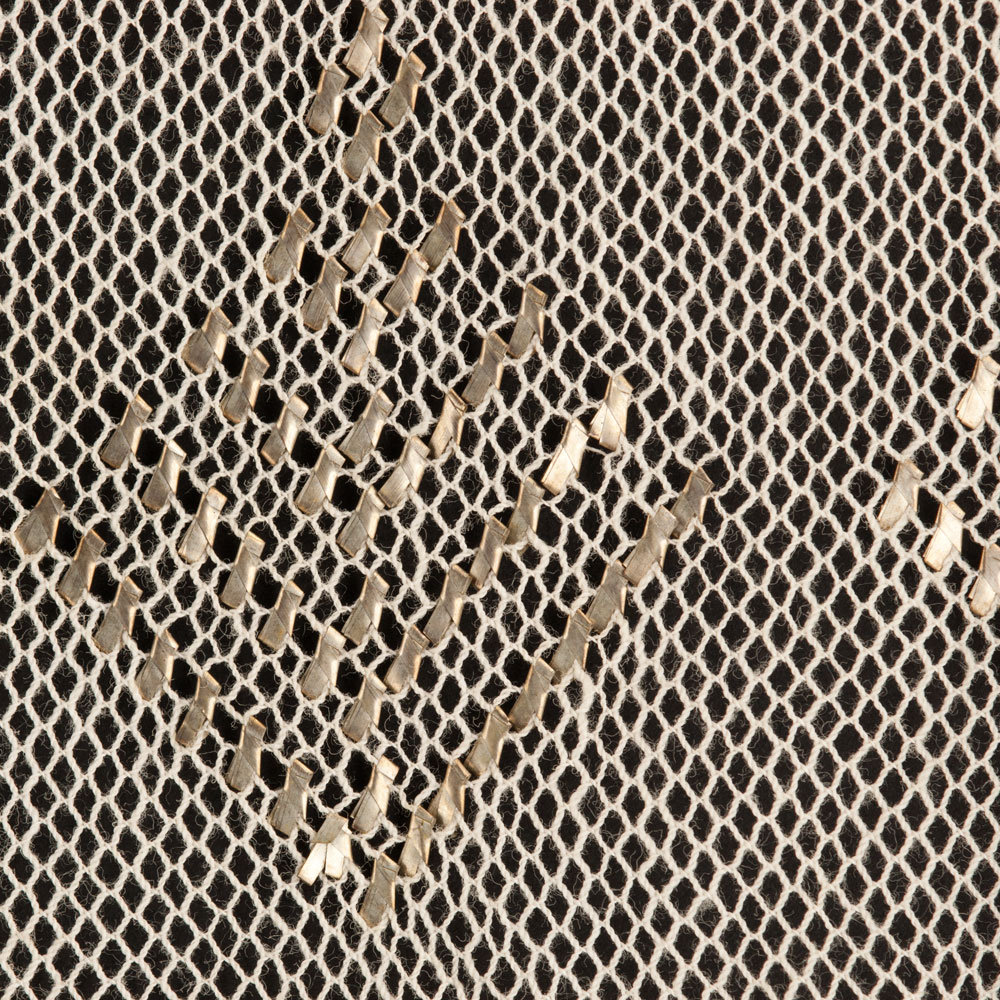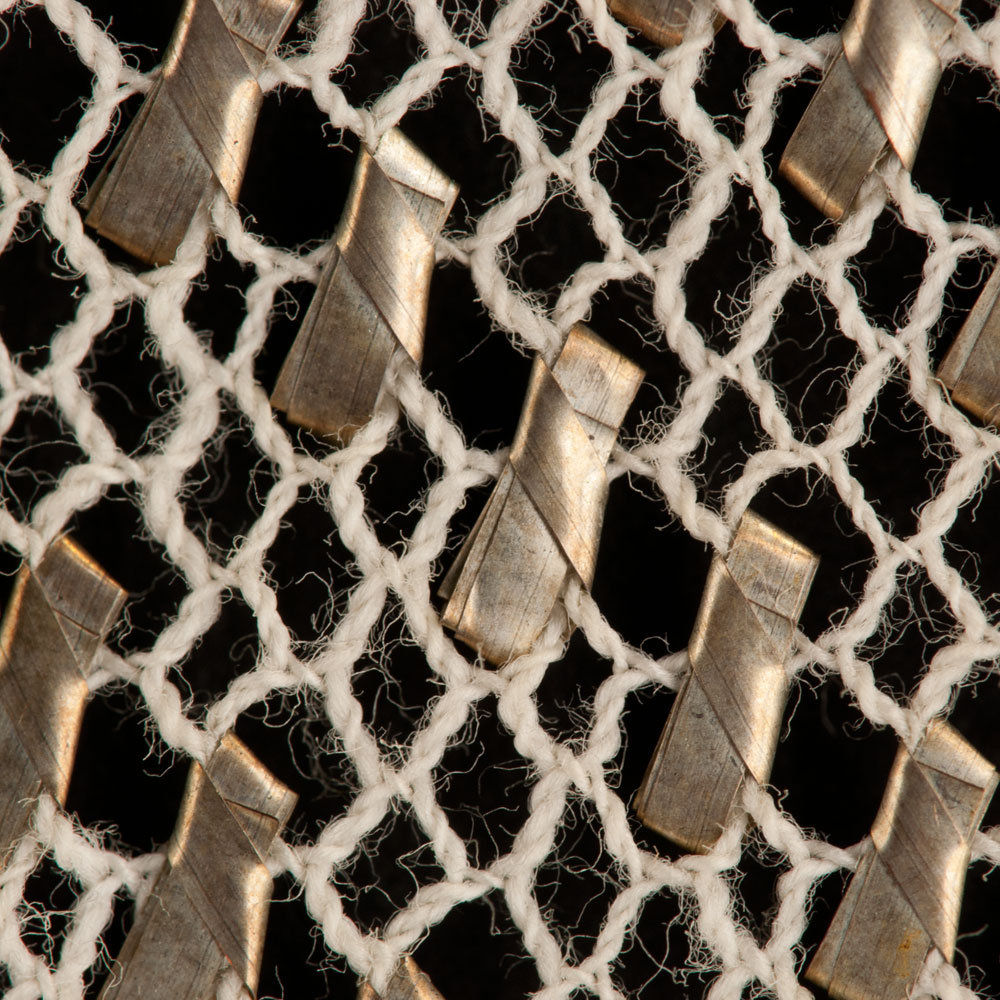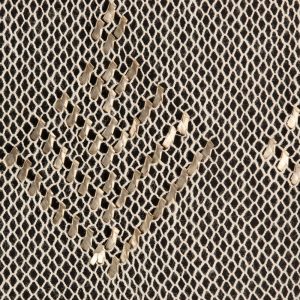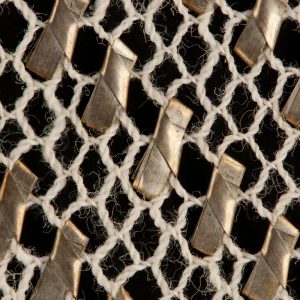Assuit is a netting fabric embroidered with metal. The embroidery is done by threading wide needles with flat strips of metal about 1/8” wide. The metal may be nickel silver, copper or brass, and it is threaded through the holes in the net, folded over, cut and flattened, making little packets of metal. When finished, the metal packets are further flattened by rolling and/or hammering over the fabric. The netting is made of cotton or linen. The fabric is also called tulle-bi-telli, an Arabic term meaning “net with metal.”
The patterns formed by this metal embroidery include geometric figures as well as plants, birds, people and camels.
Assuit has been made in the Asyut region (where it gets its name) of Upper Egypt since the late 19th century, although the concept of metal embroidery dates back to ancient Egypt, as well as other areas of the Middle East, Asia, India and Europe. A very sheer fabric is shown in Ancient Egyptian tomb paintings and the metallic embroidery is referenced in Exodus 39: “and they did beat the gold into thin plates and cut it into wires, to work it in the blue, and in the purple, and in the scarlet, and in the very fine linen, with cunning work.”
With the invention of the bobbinet machine, the netting fabric could be machine made, and during the French Protectorate this machine was introduced to the Asyut region (a textile center) by the French. The fabric was first imported to the U.S. for the 1893 Chicago Exposition, and again became popular with the fascination surrounding the discovery of King Tut’s tomb in 1922. The geometric motifs were well suited to the Art Deco style of the time. Assuit is generally black, white or ecru. It is found most often in the form of a shawl, but also seen in small squares, large pieces used as bed canopies and even traditional Egyptian dresses. Assuit shawls were made into garments by purchasers, particularly during the 1920s.
The fabric’s name is seen in many alternate spellings including asyut, assyut, asyute, asuit, assuite and azute.



